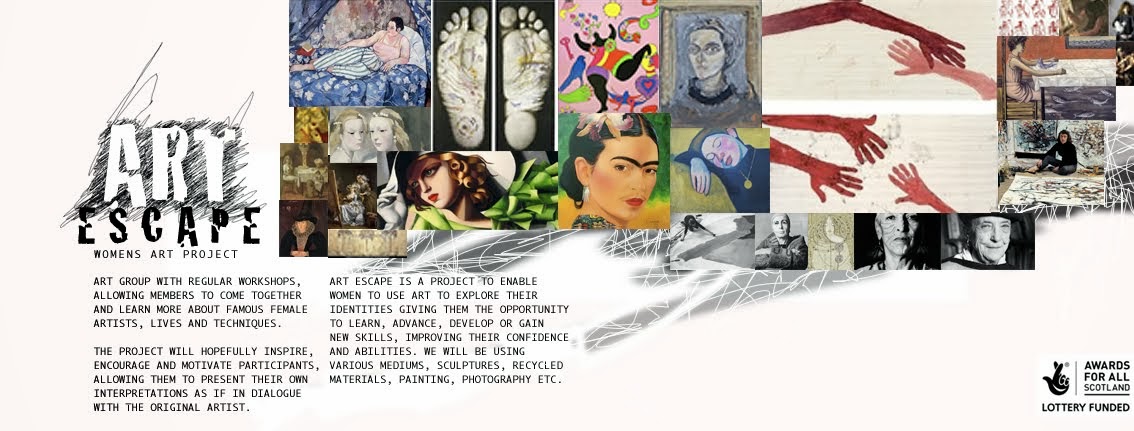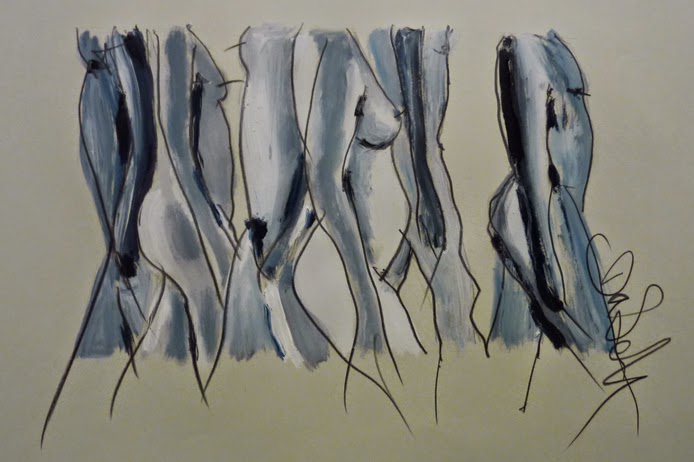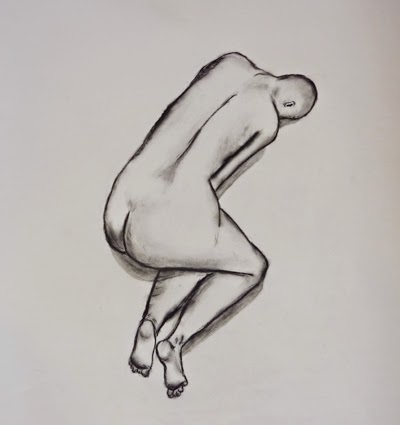Sunday 26 October 2014
Thursday 23 October 2014
Wednesday 15 October 2014
Friday 3 October 2014
EMILY CARR
Emily Carr is one of the most famous artists in Canada. Her paintings are essentially turned toward nature and landscapes of the West coast and above all towards Native’s culture. More than an artist she was an adventurer, and travelled trough Amerindian territories trying to understand this other world from the inside. And even if her point of view was mainly influenced by the occidental thoughts of her time, her approach was certainly sincere.
Emily Carr was born in 1871 in Victoria, British Columbia. Very early she has a great interest in art. She grew up in Victoria in the 1800s, in a society where there was no place for multiculturalism. However, not so far, was a Songhees village and Natives were a normal part of the environment. Carr began to realize sketches of Indian canoes... She had a real sympathy for the Natives, especially because they were living outside of the social class and far from the constraints of a world that she was herself rejecting. Because she had a difficult relationship with her family (especially her father), and because she was interested in art not only as a leisure, she was truly considering herself as an “outsider”. The funny fact is that Emily hated two types of characters: the Englishmen and the Missionaries, nonetheless her first expedition in 1899 with her devout sister Lizzie, was to a mission in the remote Nuu-Chah-Nulth village near Ucluelet on the West coast of Vancouver. The scenery that she discovered was truly sad. The village was devastated by disease and poverty. However this place and the wide forest around will impress her a lot. Moreover, Emily was feeling comfortable with Natives. Despite the language barrier, with smiles and gestures she tried to get in contact with the population and realized some sketches of Nootka villages. The inhabitants will give her the nickname “Klee Wyck” (“the laughing one”).
In 1907, with Alice (one of her other sisters), Emily went to Alaska. They visited the town of Skagway and Sitka. It was a very important trip as she discovered for the first time carved poles. This period is decisive in Emily Carr’s carrier, despite the fact she was completely ignorant about Native’s culture she took a great decision: to make an inventory of the totems before they disappeared while trying to understand their signification. Except for some topographers and Paul Kane, an Irish painter who decided to make a report on Native’s lifestyle from the Great Lakes to the Pacific in the 1840s, it was the first time that someone, especially a woman, proposed such project. Her goal was not easy, she was not really wealthy or either healthy (she was always sick). Moreover, the weather was sometimes really harsh in these remote areas. In her late writings she tells her misadventures.
Emily Carr was really passionate about Native’s culture, but she was misunderstood. Her work wasn’t recognized on its own merit. People were too narrow-minded and were not able to appreciate her paintings in its true value. During a big exhibition in 1913, she struggled to point out the historic importance of her work. She was one among the first to be aware of the slow degradation of Native’s culture and among the first who wanted to act against it. Totems poles were in natural environment and were subjected to bad weather and passing time, many of them rotting. However, despite her “historic obsession”, Carr’s paintings will change. Indeed, after a long journey in France in 1910, she began to use oil painting, more lively and emotional. But this still did not attract any audience. Added to this non-recognition was an ethic problem: she was aware that the image of a white woman in native territory could have been disturbing. For some she was taking advantage of Natives. But she never gave up.
Surprisingly, the success came at first thanks to her writings. Indeed, she wrote several books about her trips and adventures on the West coast. After a while people started to look differently at her paintings. However, by the end of her life, Emily Carr left out totem poles and began to work on a new topic: the forest. She spent most of her time often alone, painting trees and landscapes. Still lively and more abstract, these paintings are truly the quintessence of her career. A way to truly feel the immensity of Canada. Despite all the critics, sometimes understandable sometimes less, we can’t deny the hugeness of Emily’s work on Natives. She did several hundreds of paintings on this subject. And, despite a late recognition of her paintings, she was brave enough to struggle her whole life to impose her art vision and her ideas. The fact what she was looked as an “outsider” certainly helped in her task and contributed to her rapprochement with aboriginals. In all cases, beyond the realism or the historic precision she wanted to capture the essence of Northwest coast and tried to show a modern way of seeing Native materials.
More infos :http://www.museevirtuel.ca/sgc-cms/expositions-exhibitions/emily_carr/fr/index.php
https://www.emilycarr.com
(Léa Zelenkauskis)
Emily Carr is one of the most famous artists in Canada. Her paintings are essentially turned toward nature and landscapes of the West coast and above all towards Native’s culture. More than an artist she was an adventurer, and travelled trough Amerindian territories trying to understand this other world from the inside. And even if her point of view was mainly influenced by the occidental thoughts of her time, her approach was certainly sincere.
Emily Carr was born in 1871 in Victoria, British Columbia. Very early she has a great interest in art. She grew up in Victoria in the 1800s, in a society where there was no place for multiculturalism. However, not so far, was a Songhees village and Natives were a normal part of the environment. Carr began to realize sketches of Indian canoes... She had a real sympathy for the Natives, especially because they were living outside of the social class and far from the constraints of a world that she was herself rejecting. Because she had a difficult relationship with her family (especially her father), and because she was interested in art not only as a leisure, she was truly considering herself as an “outsider”. The funny fact is that Emily hated two types of characters: the Englishmen and the Missionaries, nonetheless her first expedition in 1899 with her devout sister Lizzie, was to a mission in the remote Nuu-Chah-Nulth village near Ucluelet on the West coast of Vancouver. The scenery that she discovered was truly sad. The village was devastated by disease and poverty. However this place and the wide forest around will impress her a lot. Moreover, Emily was feeling comfortable with Natives. Despite the language barrier, with smiles and gestures she tried to get in contact with the population and realized some sketches of Nootka villages. The inhabitants will give her the nickname “Klee Wyck” (“the laughing one”).
In 1907, with Alice (one of her other sisters), Emily went to Alaska. They visited the town of Skagway and Sitka. It was a very important trip as she discovered for the first time carved poles. This period is decisive in Emily Carr’s carrier, despite the fact she was completely ignorant about Native’s culture she took a great decision: to make an inventory of the totems before they disappeared while trying to understand their signification. Except for some topographers and Paul Kane, an Irish painter who decided to make a report on Native’s lifestyle from the Great Lakes to the Pacific in the 1840s, it was the first time that someone, especially a woman, proposed such project. Her goal was not easy, she was not really wealthy or either healthy (she was always sick). Moreover, the weather was sometimes really harsh in these remote areas. In her late writings she tells her misadventures.
Emily Carr was really passionate about Native’s culture, but she was misunderstood. Her work wasn’t recognized on its own merit. People were too narrow-minded and were not able to appreciate her paintings in its true value. During a big exhibition in 1913, she struggled to point out the historic importance of her work. She was one among the first to be aware of the slow degradation of Native’s culture and among the first who wanted to act against it. Totems poles were in natural environment and were subjected to bad weather and passing time, many of them rotting. However, despite her “historic obsession”, Carr’s paintings will change. Indeed, after a long journey in France in 1910, she began to use oil painting, more lively and emotional. But this still did not attract any audience. Added to this non-recognition was an ethic problem: she was aware that the image of a white woman in native territory could have been disturbing. For some she was taking advantage of Natives. But she never gave up.
Surprisingly, the success came at first thanks to her writings. Indeed, she wrote several books about her trips and adventures on the West coast. After a while people started to look differently at her paintings. However, by the end of her life, Emily Carr left out totem poles and began to work on a new topic: the forest. She spent most of her time often alone, painting trees and landscapes. Still lively and more abstract, these paintings are truly the quintessence of her career. A way to truly feel the immensity of Canada. Despite all the critics, sometimes understandable sometimes less, we can’t deny the hugeness of Emily’s work on Natives. She did several hundreds of paintings on this subject. And, despite a late recognition of her paintings, she was brave enough to struggle her whole life to impose her art vision and her ideas. The fact what she was looked as an “outsider” certainly helped in her task and contributed to her rapprochement with aboriginals. In all cases, beyond the realism or the historic precision she wanted to capture the essence of Northwest coast and tried to show a modern way of seeing Native materials.
More infos :http://www.museevirtuel.ca/sgc-cms/expositions-exhibitions/emily_carr/fr/index.php
https://www.emilycarr.com
(Léa Zelenkauskis)
Subscribe to:
Posts (Atom)














